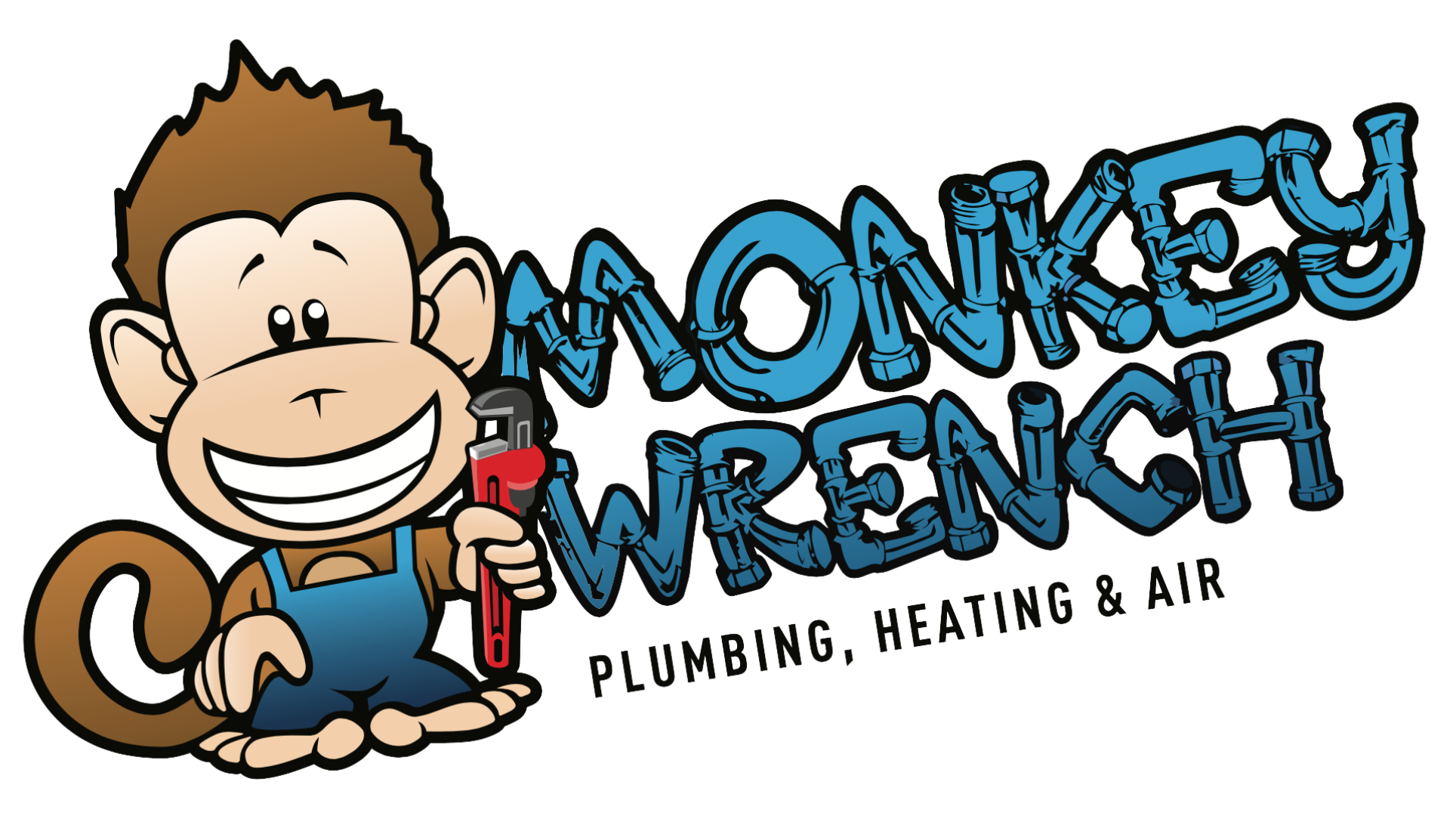The 5 Steps of a Water Chlorine and Chloramine Test
Standard Water Heaters | Tankless Water Heaters | Water Filtration & Purification
You turn on your faucet, and there it is again...That scent of Los Angeles water. You know it all too well. If you took a swig, it would taste less than mountain-fresh. If you looked at it long enough, you would see a slight yellow color. You grimace and shake your head. Disgusting.
What causes that signature LA water smell and taste? Believe it or not, it’s chlorine and chloramines. These disinfectants are added to your water by your city to kill disease-causing bacteria. How much of these chemicals are in your water? You can find out with a water chlorine and chloramine test from your local plumber.
Water comes into contact with every aspect of our business at Monkey Wrench Plumbing, Heating & Air. So, we’ve made it a priority to be thoroughly trained in diagnosing what’s in it. And we want to pass that knowledge on to you.
We promise by the end of this article, you will know exactly what a chlorine and chloramine test is, what’s needed to test for these disinfectants, and the five steps your plumber will take to get your results. We will also go over in detail what can cause inaccurate test results and we'll provide resources for your next steps.
What is a Water Chlorine and Chloramine Test?
A water chlorine and chloramine test will indicate the level of disinfectants in a water sample by parts per million (ppm). These chemicals are used to treat water and are safe for people, cats, and dogs to consume. These chemicals, however, can cause drying effects to:
-
Skin
-
Hair
-
Flappers in toilets
-
Silicone baking utensils
It's essential to get chlorine tests for:
-
Peace of Mind - Testing water verifies that city reports match your actual water quality.
-
Gardening - Knowing how much chlorine is in your water can help you avoid killing garden plants. Some plants can die from exposure to low levels of chlorine and chloramines.
-
Exotic Animals - Animals like fish or lizards can die from chlorine and chloramines in the water.
So, how do you test your water?
How Do You Perform a Water Chlorine and Chloramine Test?
While you can do a chlorine and chloramine test yourself, we recommend getting a certified plumber to test your water. Chlorine and chloramine test kits include materials to service multiple households, so it’s not cost-effective for homeowners to buy them.
The test kit includes:
-
A cylinder comparator - A device used to measure low levels of chlorine in your water. Inside the device are vials of chlorinated water you can use to compare against your results.
-
A flat comparator - A device used to measure higher levels of chlorine in your water similar to the cylinder comparator.
-
A sample cup - A ridged cup with measurements in milliliters (mL) that is used to gather your water sample.
-
Ampoules - Scored pipettes with a solution inside used to test your water sample.
You will need all of these items to complete an accurate water chlorine test.
CHEMets chlorine test kit
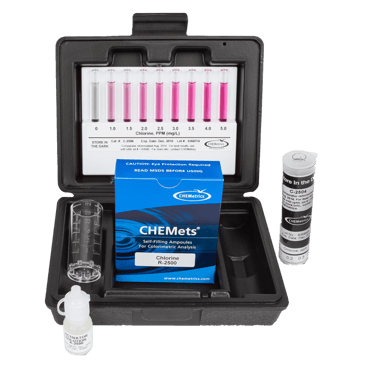
To test your water for disinfectants, your plumber will need to:
-
Decide on a testing area
-
Get a water sample
-
Test the water
-
Wait for results
-
Compare results
Let’s break them down, so you know what to expect.
1. Deciding on a Testing Area
Water chlorine and chloramine tests can be done from any point of access in your house. A point of access is anywhere water enters your home, such as:
-
Sinks
-
Showers
-
Tubs
-
Hose bibs (garden faucet)
You can also compare different parts of your house against each other like below:
Example A: Testing your faucet vs. a water pitcher filter.
Example B: Testing a sink vs. the inside of your fridge.
Example C: Testing your showers vs. bottled water.
This process can be a fun learning experience for you and your family, so get everyone involved!
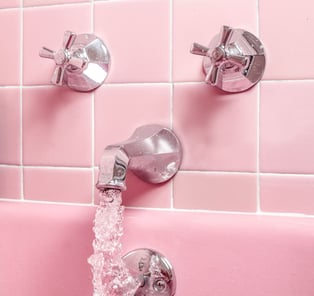
2. Getting a Water Sample
To get a good water sample, your plumber will:
-
Use fresh water - Water that’s been left out in the sun can become dechlorinated within 24hrs. This will give you an inaccurate test result.
-
Directly test water from a fixture - Testing water indirectly, like from a water pitcher filter, will cause inaccurate results.
-
Run the tap for 1-2 minutes - Water left in your pipes can give an incorrect chlorine reading. You will get the most accurate results by turning your sink on and running it for the required time.
-
Fill the sample cup - Your plumber will gather 25mL of water to test. Any water more or less than the specified amount will interfere with the test results.
Note: If your water has a slightly yellow tinge to it naturally, it has some level of chlorine in it.
3. Testing the Water
Next, your plumber will test your water with the ampoule. They’ll do this by:
-
Putting the ampoule in the water sample
-
Breaking the ampoule with the ridge at the bottom of the cup
-
Gently mixing the sample and ampoule solution by rocking the ampoule back and forth
-
Drying the ampoule
The ampoule creates a vacuuming effect that pulls water from the sample cup to meet the indicator liquid. Once the ampoule is full the water and solution will not drip out.
Breaking the ampoule
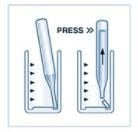
4. Waiting for Results
Waiting for your results is a simple step, but easy to mess up! While the solution inside the ampoule will immediately start to turn pink, you must wait for the color to deepen over the course of one minute.
Note: Comparing your results before a minute is up will give you a lower chlorine and chloramine level than you actually have.
5. Comparing Results
After a minute, your plumber will compare your ampoule to the examples in one of the comparators.
- The cylinder comparator indicates chlorine levels from 0-1ppm in 1/10 increments.
- The flat comparator indicates chlorine levels from 0-5ppm in whole number increments.
Using the Cylinder Comparator
To use the cylinder comparator, your plumber will:
-
Place the ampoule in the comparator pointed side up
-
Hold the comparator up to a light
-
Rotate the comparator to find the best color match directly below your sample
You now have your results!
Using the Flat Comparator
To use the flat comparator, your plumber will:
-
Stand beneath a light source
-
Hold the comparator almost horizontal to their body
-
Start at zero on the comparator and place your sample between the examples until they find the best color match
These are your results!
To give you an idea of how much chlorine is in your water a residential swimming pool has .5 - 1.5 chlorine ppm up to 4ppm is considered safe to drink.
Using the comparators
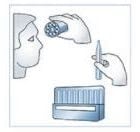
Why Doesn’t My Water Smell Like Chlorine?
Now that you have your results, you may be wondering why your water doesn’t smell like a pool. Brace yourself. Chlorine in a pool smells the way it does due to interacting with:
-
Sweat
-
Body oils
-
Cosmetics
-
Urine
Sorry if you won’t be able to look at a pool the same way again, but at least you know the water in your home is free from human contaminants.
What Can I Do With My Chlorine Test Results?
Now that you know where and how to test your water, get a water sample, and obtain a correct test result, what can you do with it? You can RAP. No, not that kind of rap, but do what makes you happy. What we mean is you can be:
-
Reassured that your water is protected by chlorine or chloramines and is safe to use.
-
Alerted to the level of chlorine and chloramines in your water, so you understand its effects on appliances, certain plants, animals, and even your skin.
-
Prepared to take the next steps to remove chlorine from your home’s water.
Want to know more about water testing? Read these articles:
If you’re ready to talk about your water filtration options, call us or book online to schedule an appointment. Water filters can break down disinfectants and other things you don’t want in your water.
